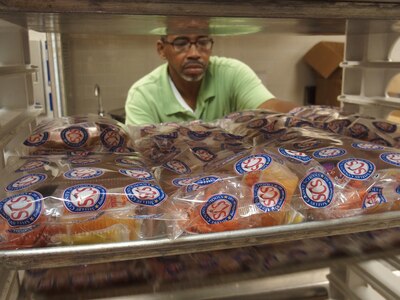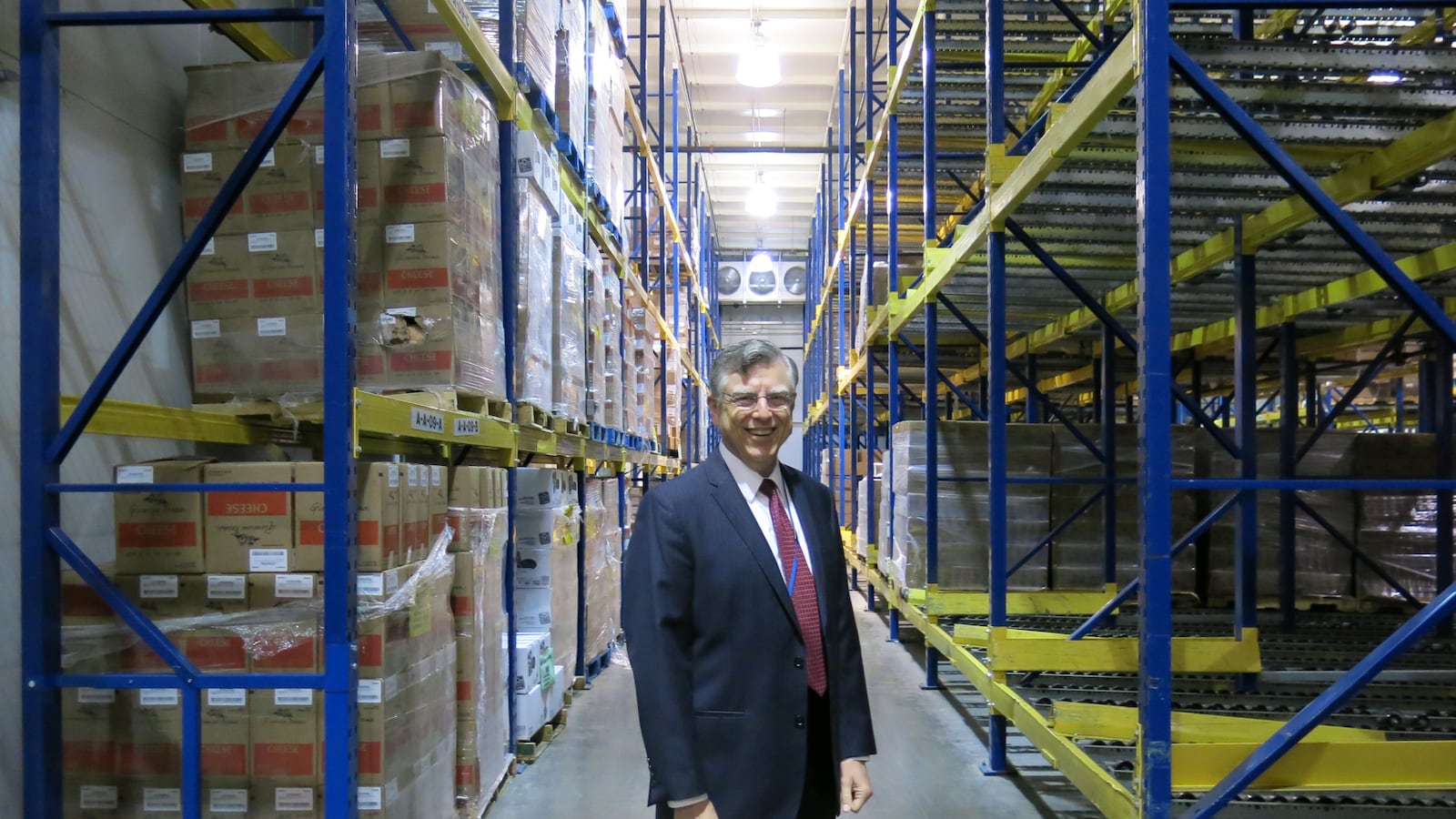Tennessee’s largest school district has a freezer the size of a hockey rink to store food that goes to school cafeterias. But a dramatic surge in the number of students eating school lunches means the space is no longer enough.
In the next year, Shelby County Schools aims to double that space to accommodate the food needed to serve all the students who started eating lunch at school after the district started giving everyone free meals in 2014.
Before then, most students had to apply and prove every year that their families were poor in order to eat for free or at reduced cost. In a city where 80 percent of children are considered poor, some students never got free meals in the first place while others got cut off, and some were too embarrassed to eat at all.
Taking advantage of new flexibility from the federal government, which funds school food, the district decided in 2014 to let everyone eat for free. The idea was that by making it easier and less embarrassing to get a free lunch, more students would eat nutritious food at school.
That appears to be happening. While the exact size of the increase is hard to pin down because of the district’s recent restructuring, some schools are serving cafeteria food to as many as 80 percent more kids, according to Frank Cook, the interim director nutrition services at Shelby County Schools.
The increase is heartening, Cook said — but it also has the district rethinking how schools and the central office can most efficiently serve all of the new consumers.
“Our schools weren’t designed for this many kids eating lunch. Now if you’ve got more kids wanting to eat, 20-minute lunch periods can’t accommodate them,” he said. “We’ve improved access to the meals, but we haven’t dealt with how to feed that many kids.”
Already, the district hired about 250 more people to staff newly bustling cafeterias, according to Phyllis Glover, the school operations manager for SCS nutrition services. It has also improved some schools’ cafeterias, such as by adding more refrigerators.
Soon, Cook said, some schools could get vending machines to reduce pressure on the cafeteria lunch line and decrease the amount of time students spend waiting for food.
And in the next year, the district aims to double the size of its central freezer, where food is stored before being distributed to schools.
The changes all come with a cost. But the federal government is helping. The district is paying for the freezer expansion, for example, with about $4 million in federal equipment funds.
The eligibility change, formally called the “Community Eligibility Provision,” has generated some savings, too. In the past, the district hired an eight-person temporary staff to process and verify meal applications every year. Now, there are no applications to print or process. The change saves about $53,000 a year, according to district estimates.

Plus, lunch lines move faster when young children don’t have to remember a 10-digit identification number or bring money to get lunch, said Tommystein Carpenter, who runs the cafeteria at Winridge Elementary School.
“The district is always at a push, push, push for academics,” Carpenter said. “So lunch time should be a pleasant time, a relaxing time so they can enjoy their meal and chill, and then get ready to go back to the classroom to battle the academic beast.”
Indeed, people involved in school lunches say the greatest impact of the eligibility change goes far beyond facilities and logistics.
Before the change, Kevin Patterson, who runs Kirby High School’s cafeteria, said some students didn’t eat because they worried about their classmates knowing that their families are poor. Now, he said, “no one knows if they can or cannot afford it.”
Students who used to pocket their lunch money and forgo eating at all are now getting in line, Carpenter said.
And because the district is spending more on food, it is able to buy more nutritious options. Strolling the aisles of the central office freezer last week, Cook broke into a wide smile as he described the fresh salads that Memphis schools offered for the first time last year. There’s more to come, he said.
“Now, we’re able to step back and serve better food to the kids,” he said.

